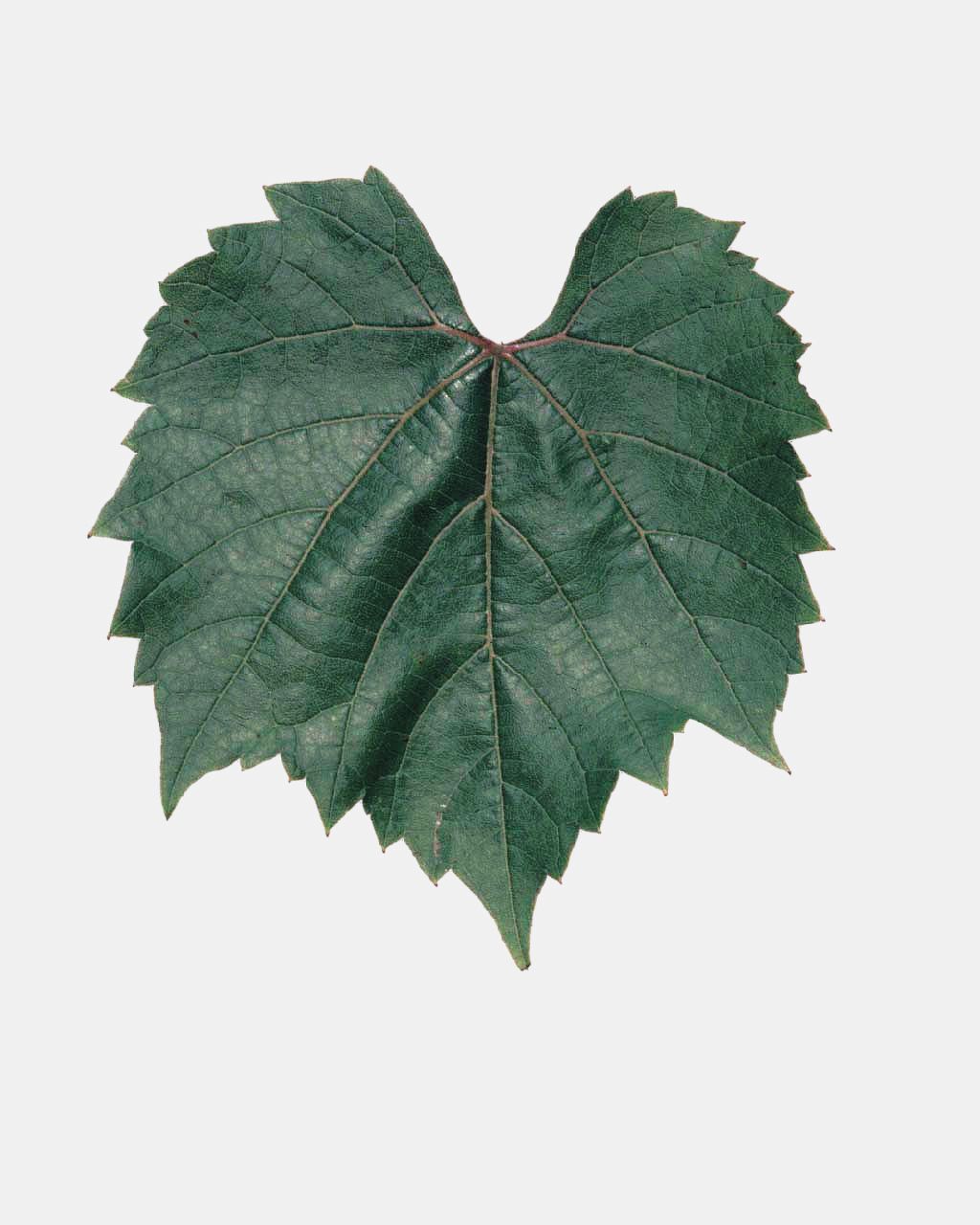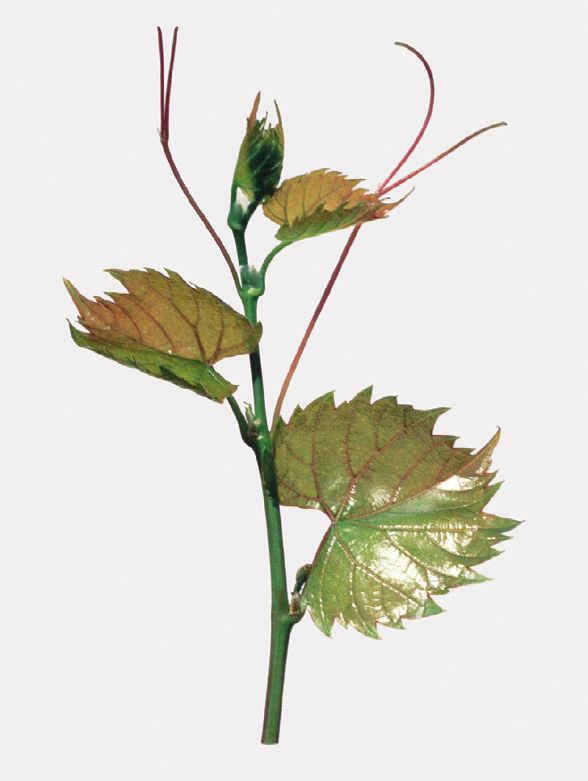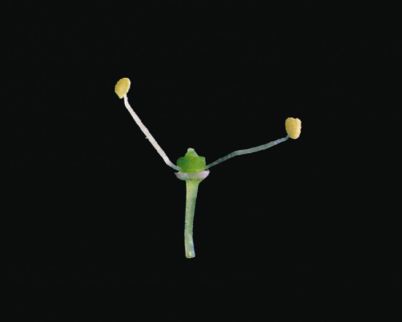3309 C
3309 Couderc
This variety results from the crossbreeding between Vitis riparia (tomentose) and Vitis rupestris cv. Martin.
The genetic origin of the variety is also indicated when known thanks to hybridiser data or genetic analysis either published or obtained by the teams at INRAE in Montpellier (UMR AGAP) and at the Vassal-Montpellier Grapevine Biological Resources Centre (CRB-Vigne).
This variety results from the crossbreeding between Vitis riparia (tomentose) and Vitis rupestris cv. Martin.
The rootstock variety is presented by the abbreviation or name under which it appears in the national catalogue and which is also the most commonly used in French grapevine nurseries and French viticulture. There is no official list of synonyms for rootstock varieties.
3309 C
The name of the breeder and/or selector is indicated, as is the year in which the variety was bred.
Georges Couderc, 1881.
The figures are estimated based on the computerised vineyard register and bibliographical data.
105 000 ha . Bourgogne Franche-Comté, Val de Loire, Aquitaine, Alsace, Midi-Pyrénées, Rhône-Alpes, Languedoc-Roussillon, Provence-Alpes-Côte d’Azur, Champagne.
Evolution of cultivated areas in France
The figures provided are taken from vineyard land registers (IVCC, ONIVIT, ONIVINS), general agricultural censuses (SCEES-INSEE) and the current computerised vineyard register (DGDDI, FAM).
Regional vine planting data is available on the following site: https://visionet.franceagrimer.fr/Pages/DonneesInteractivesDocs.aspx?sousmenu=observatoire%20de%20la%20viticulture.
The figures provided are taken from vineyard land registers (IVCC, ONIVIT, ONIVINS), general agricultural censuses (SCEES-INSEE) and the current computerised vineyard register (DGDDI, FAM). Regional vine planting data is available on the following site: https://visionet.franceagrimer.fr/Pages/DonneesInteractivesDocs.aspx?sousmenu=observatoire%20de%20la%20viticulture.
Year |
ha |
|
|---|---|---|
|
1945 |
341 |
|
|
1955 |
607 |
|
|
1965 |
486 |
|
|
1975 |
353 |
|
|
1985 |
276 |
|
|
1995 |
294 |
|
|
2005 |
291 |
|
|
2015 |
274 |

Only the main ampelographic elements enabling the rootstocks to be characterised and identified are provided. They are described according to the ampelographic descriptor code recognised by the International Organisation of Vine and Wine (OIV), the International Union for the Protection of New Varieties of Plants (UPOV), the Community Plant Variety Office (OCVV) and Bioversity International (for more information, see the "Ampelographic glossary" menu). The photographs of buds, flowers and adult leaves were taken indoors by the INRAE team at Domaine de Vassal from material sampled from the ampelographic collections of the Vassal-Montpellier Grapevine Biological Resources Centre. Note: the scale of the photos is not the same for the three organs shown. The photos of buds have been reduced (x 0.5 approx.), as have those of the adult leaves (x 0.25 approx.), while those of the flowers have been enlarged (x 4 approx.).
- the tip of the young shoot that is closed, with a low to medium density of erect hairs and no prostrate hairs,
- the reddish to bronzed young leaves,
- the purplish shoots with a bushy and erect bearing, an elliptic to circular section, and no erect and prostrate hairs,
- the small to medium, circular, entire adult leaves, with an open U-shaped petiole sinus, sometimes with naked petiole veins, or V-shaped for the leaves of the secondary shoots, a smooth, shiny, involute leaf blade, sometimes slightly goffered or hammered, a moderate to strong anthocyanin coloration of the veins, and on the lower side of the leaves, a low density of erect hairs and no prostrate hairs,
- the male flowers with anythocyanin coloration around the base of the petals,
- the browny red to purplish woody shoots, with erect or prostrate hairs.
Genetic profile
The genetic profile of the variety is provided for the 9 microsatellite markers (or SSR markers) selected under the European programme GrapeGen06 (http://www.eu-vitis.de/index.php) and by the OIV. The absolute size values of the alleles may vary slightly from one laboratory to another, but the relative differences between the two alleles of one single microsatellite are constant. The genetic analyses were conducted by the INRAE Montpellier team (UMR AGAP) and the IFV’s Plant Material Centre.
| Microsatellite | VVS2 | VVMD5 | VVMD7 | VVMD27 | VRZAG62 | VRZAG79 | VVMD25 | VVMD28 | VVMD32 |
|---|---|---|---|---|---|---|---|---|---|
|
Allele 1 |
120 |
250 |
245 |
236 |
180 |
256 |
236 |
239 |
236 |
|
Allele 2 |
159 |
261 |
259 |
238 |
190 |
258 |
238 |
245 |
245 |
The degree of tolerance to the root form of phylloxera and resistance to nematodes (Meloidogyne hapla, Meloidogyne incognita and Meloidogyne arenaria), to Agrobacterium vitis (the bacterium responsible for burls) and to certain soil fungi is stated on the basis of observations or bibliographical data.
3309 C has a very high tolerance to the root form of phylloxera but is sensitive to Meloidogyne arenaria and Meloidogyne incognita nematodes. It would be fairly tolerant to Agrobacterium vitis.
The level of wood production by the rootstock strains is stated (source: ENTAV-ONIVINS survey of grapevine nurseries, April 2001). The suitability for cleaning, disbudding, cutting and grafting is also specified. Further details are provided if the rootstock variety requires special precautions during grafting and layering.
The length of the internodes is low to moderate and the diameter is moderate. The practice of green disbudding is recommended. The important growth of lateral shoot buds and the lignified tendrils make the cleaning and disbudding difficult. 3309 C wood production is low to moderate (20 000 to 50 000 m/ha) with sometimes a certain proportion of damaged wood. This rootstock has excellent cuttings rooting and grafting capacities. Its canes are easily preserved. They require a good rehydratation but the application of hormones is not necessary and should be moderate if performed.
All certified clones are listed, as are the surface areas of the mother vine of clones that are propagated. For the moment, clonal selection of rootstock is conducted solely for sanitary purposes.
In France, the 9 certified 3309 C clones carry the numbers 8, 111, 143, 144, 147, 173, 188, 189 and 1160. Joining issues have sometimes been noticed, particularly with the clone number 111. Among those, the clones multiplied are:
- clone No. 8: 25 ares of mother vines producing certified material, in 2017,
- clone No. 111: 9 ha 33 ares of mother vines producing certified material, in 2017,
- clone No. 143: 49 ha 81 ares of mother vines producing certified material, in 2017,
- clone No. 144: 197 ha 76 ares of mother vines producing certified material, in 2017,
- clone No. 147: 7 ha 99 ares of mother vines producing certified material, in 2017,
- clone No. 1160: 20 ha 46 ares of mother vines producing certified material, in 2017.
Datas are extracted from: Les chiffres de la pépinière viticole, 2017, Datas and assesment of FranceAgriMer, may 2018.
This paragraph provides information on the behaviour of the rootstock variety in relation to the structure, texture and composition of the soil, its mineral content and the soil’s pH. It also states the behaviour of the rootstock when faced with an excess or lack of water during the vegetative period. Chlorosis Iron chlorosis is related to problems of iron assimilation due to low iron content and/or high carbonate content in soil. Total calcium carbonate content alone gives only a partial idea of the chlorosis-inducing power of the soil. The active calcium carbonate content corresponds to the percentage of carbonate present in the fine fraction of the soil (clays, fine silts). Depending on the characteristics of the parent rock and its geological origin, this represents a variable percentage of the total calcium carbonate. The chlorotic power index (IPC) is a calculation which takes into account the active calcium carbonate content and the easily extractible iron content of the soil. These three values provide an insight into the risk of chlorosis and allow growers to choose the most suitable rootstock variety accordingly. Tylosis and apoplexy These apoplexy phenomena are linked to problems of water circulation through the plant when evapotranspiration is high (dry wind following heavy rainfall in the summer season) and the absorption of water through the roots is limited. In this case, the high pressure in the vessels causes air bubbles (cavitation) and tyloses (invagination of the membrane of neighbouring cells in the vessels) to form, which causes a slowing of sap circulation and water stress in the leaves.
The 3309 C tolerance to chlorosis is low to moderate and it only resists up to 20% of "total" limestone, 11% of "active" limestone and an ICP of 10. However, it seems to be well suited to acidic soils. 3309 C is sensitive to water stress, particularly when it occurs suddenly during the growing cycle. Its adaptation to water excess is also weak. 3309 C absords magnesium very easily but potassium with more difficulty. This rootstock is extremely sensitive to chlorides and its use must be avoided if there is a risk of salinity. 3309 C is well adapted to deep, sandy-clay, clay-limestone, with no or very little limestone soils.
The rootstock may interact with the characteristics of the graft in terms of precocity of the vegetative cycle and the growth and development of the branches, as well as yield factors (fertility and berry size). In some cases, the risks of incompatibility or poor affinity of the rootstock variety with a graft variety are specified.
3309 C generally has a good affinity with grafts. However, some joining problems have been noticed with Cabernet-Sauvignon, Chenin, Dattier de Beyrouth, Pineau d’Aunis, Riesling, Syrah and Sauvignon. Some of these varieties are grafted in significant amount with 3309 C. The growth and fruit set speed given by 3309 C is a little slow. Vigor confered by 3309 C is low to moderate and vegetative growth is balanced, especially if the agronomic fertility of the soil is not too high. 3309 C promotes the fruit set of sensitive varieties to coulure. The varieties grafted onto this rootstock produce recognized quality products and the associations with Cabernet franc, Cabernet-Sauvignon, Chardonnay, Colombard, Fer, Gamay, Gros Manseng, Melon, Merlot, Petit Manseng, Pinot, Sauvignon, Semillon, Riesling, Syrah and Tannat are particular appreciated.
The rootstock may interact with the characteristics of the graft in terms of precocity of the vegetative cycle and the growth and development of the branches, as well as yield factors (fertility and berry size). In some cases, the risks of incompatibility or poor affinity of the rootstock variety with a graft variety are specified.
- Catalogue des variétés et clones de vigne cultivés en France. Collectif, 2007, Ed. IFV, Le Grau-du-Roi, France.
- Documentary collections of the Centre de Ressources Biologiques de la Vigne de Vassal-Montpellier, INRAE - Montpellier SupAgro, Marseillan, France.
- Cépages et vignobles de France, tome 1. P. Galet, 1988, Ed. Dehan, Montpellier, France.






